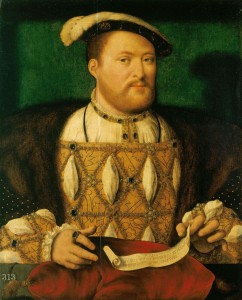An historic castle that was once home to both King Canute and, centuries later, King Henry VIII, has been put up for sale.

With an asking price of £2.6million, Westenhanger Manor in Kent has plenty of regal features from a medieval turret to a vast deer park.
The fortified property dates back as far as 1045 AD, when it was occupied by King Canute, the Danish prince who won the throne of England in 1016.
By 1523, during the reign of King Henry VIII, Westenhanger Manor was frequently used by the notorious monarch who entertained guests (including a bevy of mistresses) by throwing lavish banquets at the south coast seat, a place he felt gave him the opportunity to behave as he liked away from his wives (none of whom are thought to have ever visited the castle).
Henry also turned the turret into a dovecot, home to birds that he would eat. The castle was under Henry’s ownership until his death in 1547 at the age of 55.

Henry developed the gardens for his daughter Mary, but in the end it was his other daughter, Elizabeth, who inherited Westenhanger. She would entertain more than 300 guests at any one time with feasts that could last for days. It remained a royal palace until 1581 when the then Queen Elizabeth I gave it to her Collector of Customs, Thomas Smythe, as a means of paying off her debts.
Westenhanger Manor was languishing in virtual ruin until relatively recently when the Forge family bought it for £330,000 in 1996.
“When we bought it we thought about turning it into a hotel but it is too special for that,” says Mr Forge, a retired engineer who has in the past 16 years, with help from English Heritage, ploughed millions of pounds into making restorations to the building.
“All the essential work is done, we have never had any archeology work carried out because of the huge cost, instead we saved our pennies for the restoration. You try hard not to fall in love with it but it’s hard [not to].”
A replica medieval kitchen is still under construction. In one of the three bedrooms (used as a bridal suite for the many weddings held the castle each year) is an exceptional mullioned leaded light window believed to date from around 1500, boasting ancient ‘graffiti’ to the inner left side jamb believed to depict King James II.
Related articlesThe wives of Henry VIII |
Click here to subscribe! |





 © 2024
© 2024